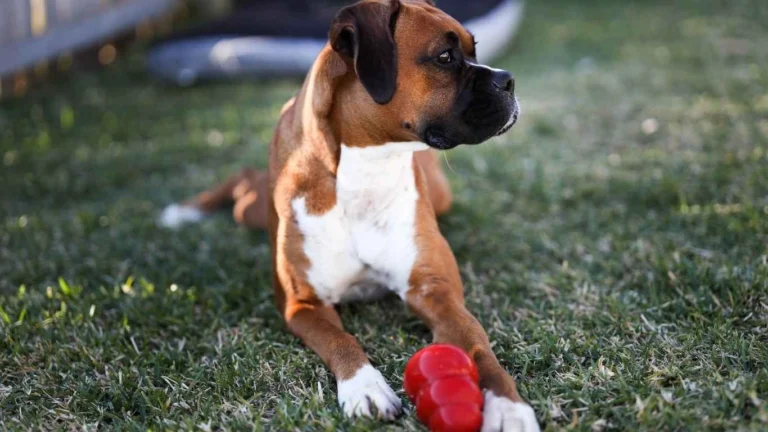Why the Best Foods to Support Healthy Puppy Development Matter Now
When it comes to giving puppies the best start in life, the best foods to support healthy puppy development are more than just a marketing claim—they’re your pup’s foundation for a lifetime of health. I’ve worked with all sorts of pups in shelters and clinics over the years, and let me tell you—what goes into that food bowl can make all the difference. You’d be amazed how many issues like poor coat condition, low energy, or even behavior quirks come back to nutrition. So if you’re a new puppy parent or just brushing up, let’s dig into what your furry little sidekick actually needs.
Understanding What Healthy Puppy Development Really Means

“Healthy development” gets tossed around a lot, but it’s not just about looking cute and growing fast. We’re talking about solid bones, proper brain growth, strong immunity, good digestion—you name it. Puppies grow at lightning speed, and their nutritional needs are way more intense than adult dogs. Think of them like toddlers: curious, energetic, and in need of constant fueling.
From my time assisting with intake assessments at the clinic, I noticed that undernourished puppies often have dull coats, poor muscle tone, and even behavior issues like excessive chewing or restlessness. That’s not just “puppy stuff”—those are red flags that they’re missing key nutrients.
Why One-Size-Fits-All Doesn’t Work
One thing I always tell pet parents: not all kibble is created equal. There’s no single “perfect food” for every pup. Breed size, activity level, and even the pup’s background (shelter-born vs. breeder-raised) affect what they need. For example, large breeds like Labs or Goldens need carefully balanced calcium and phosphorus to avoid bone issues. Toy breeds? They burn through calories faster and need more frequent meals.
- Large breeds: Need slow, steady growth to avoid orthopedic issues.
- Small breeds: Require high energy and nutrient density in smaller portions.
- Rescue pups: Might need nutritional rehab due to poor early care.
Key Nutrients Every Puppy Needs for Optimal Growth

In my years on the clinic floor, I’ve learned to recognize when a pup’s food is missing the mark. A well-rounded puppy diet isn’t just about protein—though that’s huge—it’s about a blend of macronutrients and micronutrients that all work together.
1. Protein: The Building Block
This is the big one. Puppies need more protein than adult dogs to build muscle and support overall growth. Look for foods with named animal proteins (like chicken, lamb, or salmon) listed first. I’ve seen pups thrive when they switch to a high-quality protein source—especially rescue litters that were underweight on arrival.
2. DHA for Brain and Vision Development
DHA, an omega-3 fatty acid found in fish oil, is essential for brain and eye development. A lot of the higher-end puppy foods include it, but it’s something to double-check on the label. I’ve seen sharper responsiveness and better learning in pups who get enough DHA early on—it’s like giving their brain a head start.
3. Calcium and Phosphorus for Bone Growth
Especially critical for large-breed pups, this mineral duo supports proper bone and joint development. But here’s the catch: too much can be just as harmful as too little. That’s why I always steer people away from over-supplementing unless advised by a vet.
4. Antioxidants and Vitamins for Immunity
New environments—whether it’s a shelter, a new home, or the dog park—mean lots of exposure to germs. A good puppy food should be rich in antioxidants like vitamin E and C to support the immune system. I’ve had fosters bounce back from kennel cough and parasites faster when their diets were loaded with the good stuff.
- Vitamin E: Boosts immune defense.
- Vitamin C: Reduces inflammation and supports healing.
- Zinc and selenium: Promote skin and coat health.
Wet Food vs. Dry Food: What’s Better for Puppies?

This question pops up more than you’d think. I’ve had adopters swear by one or the other, but the real answer? It depends. Dry food is convenient, shelf-stable, and usually better for dental health, but some pups just don’t go for it—especially if they’ve had a rough start and need coaxing. Wet food tends to be more palatable and hydrating, but it’s pricier and can lead to plaque build-up if you’re not brushing regularly.
Personally, I’ve had the most success recommending a combo: dry kibble for crunch and dental benefits, with a spoonful of wet food mixed in to entice picky eaters. Just be sure it’s a puppy-specific formula—adult dog food won’t cut it for a growing body.
Common Feeding Mistakes That Can Sabotage Puppy Development

Alright, let’s get real for a second. I’ve seen a lot of well-meaning folks accidentally make feeding mistakes that mess with their puppy’s health. It’s not about judgment—there’s a learning curve, and honestly, even I had a few “oops” moments back when I was fostering my first litter.
Free-Feeding vs. Scheduled Meals
I get the appeal of free-feeding—it feels convenient to leave a bowl out all day. But with puppies? That’s asking for trouble. Not only does it make potty training way harder (trust me, I’ve cleaned enough kennel floors to know), but it also messes with their metabolism and appetite regulation. Scheduled meals are better for tracking intake and setting routines, and they also help you spot if something’s off—like if your pup skips a meal, that’s usually a red flag.
Switching Foods Too Often
Another biggie: jumping from one brand to another because your puppy “got bored.” Dogs aren’t like us—they don’t need a buffet. Rapid changes can seriously upset their stomachs. I recommend sticking with one high-quality food and only transitioning slowly (over at least 7 days) if needed. In the shelter, any sudden food change almost always resulted in tummy troubles—and a lot of laundry for the staff.
Giving Too Many Treats
Look, I love a good treat session as much as the next dog lover. Positive reinforcement is magic. But treats should never make up more than 10% of your pup’s daily calories. Overdo it, and you’ll have a chubby pup with unbalanced nutrition. Opt for training treats that are small and nutritious, or use pieces of their kibble—works just as well in most cases.
How to Choose the Best Foods to Support Healthy Puppy Development

Walking into a pet store can feel like staring down a wall of confusion. Grain-free, holistic, raw, limited-ingredient… it’s a lot. But if you know what to look for, you can cut through the noise and pick something solid.
Check the AAFCO Statement
This is a non-negotiable. You want a label that says the food meets the nutritional levels established by the AAFCO for growth or all life stages. That’s your green light that the formula is safe and complete for puppies. I’ve had adopters come in with boutique foods that lacked this statement—and their pups were paying the price.
Named Animal Proteins First
Ingredient lists matter. Look for named meats like “chicken” or “lamb” as the first ingredient. “Meat meal” can be okay if it’s from a named source, but if it just says “meat by-product” with no clarification, that’s a no-go in my book. I’ve seen pups put on quality weight and energy within a week or two of switching to better protein sources—it’s that noticeable.
Skip the Fillers
Watch out for fillers like corn, soy, and wheat being listed high up. They’re not “evil,” but they’re often just cheap bulking agents. The goal is digestibility and nutrient density. Puppies should eat less and get more out of it. I’ve found that pups on higher-quality foods have firmer stools, less gas (a blessing in multi-dog homes!), and shinier coats.
What About Raw or Homemade Diets?

Oh boy, this one’s always a hot topic. I’ve had clients swear by raw feeding and others who wouldn’t go near it. Here’s my take, coming from clinic experience and the real-world side of shelter work: if you’re going raw or homemade, you must do it with guidance from a veterinary nutritionist. Period.
I’ve seen well-intentioned pet parents try to DIY it, only for their pup to end up with calcium deficiencies or gastrointestinal upset. Puppies have precise needs, and a mistake in the ratios—especially with things like calcium-to-phosphorus—can lead to permanent bone issues. If you’re going that route, invest in expert help. Otherwise, stick to a high-quality commercial diet that’s been formulated by professionals.
Supplement Wisely (Or Not At All)
Another thing I often see is over-supplementing. People mean well, but throwing in extra vitamins or fish oil without a reason can do more harm than good. Most balanced puppy foods already include what they need. Unless a vet has suggested something specific, skip the add-ons.
- OK to add: Vet-approved probiotics or a sprinkle of bone broth for hydration and appeal.
- Not recommended: Multivitamins, extra calcium, or essential oils (especially unsafe for dogs).
How Much and How Often Should You Feed a Puppy?
This varies a bit by breed and age, but here’s a general guide I give to new puppy parents:
- 8-12 weeks: 4 meals per day
- 3-6 months: 3 meals per day
- 6-12 months: 2 meals per day
By the time they’re around a year old (or a bit older for large breeds), they can usually transition to an adult schedule. Just remember, every puppy is different. I had a Shepherd mix named Max who needed a midday snack until he was almost 14 months. Follow your pup’s energy and body condition—not just the calendar.
Recommended Brands That Support Healthy Puppy Development

Now that we’ve covered what nutrients matter and how to feed, let’s get into the real-world stuff—brands I’ve actually seen work for pups across shelters, clinics, and my own fosters. Of course, every pup’s different, but these are solid, vet-approved starting points.
1. Royal Canin Puppy Formulas
Royal Canin does a great job with breed-specific formulas, and their puppy lines are especially well-balanced. I used this brand often for litters that came into the shelter looking rough. Within a few weeks, we’d start seeing shinier coats and more energy. It’s especially great for large breeds with precise growth needs.
2. Hill’s Science Diet Puppy
This one’s a clinic favorite. It’s backed by tons of research and formulated by veterinary nutritionists. I’ve recommended this to pet parents who needed something super reliable for pups recovering from malnutrition or transitioning from poor diets. Easy to digest and packed with nutrients.
3. Purina Pro Plan Puppy
Purina’s been in the game a long time, and their Pro Plan line is legit. I like that it includes real meat, DHA, and antioxidants, all without breaking the bank. When I worked with foster families on a budget, this was a go-to pick that didn’t compromise on quality.
4. Wellness Complete Health Puppy
If you’re leaning toward more natural ingredients without going full raw, this brand hits a nice balance. I’ve had adopters report excellent results with pups that had sensitive stomachs or allergies. It’s protein-forward with no fillers or artificial junk.
- Tip: Always transition foods gradually—over 7 to 10 days—to avoid upset tummies.
- Bonus: You can always call the company’s support line and ask for feeding help—they usually offer guidance tailored to your puppy’s breed and age.
Transitioning to Adult Food: When and How

This part can feel tricky, especially if your pup still acts like a bottomless pit. I’ve had pet parents ask, “But he’s still growing, should I really switch?” Here’s the general rule of thumb I share with folks at the clinic:
- Small breeds: Transition around 10-12 months
- Medium breeds: 12 months
- Large/Giant breeds: 12-18 months, sometimes later
Look for signs like a slowdown in growth, stabilizing weight, and adult behavior patterns. And just like with any change, mix the new adult food with the puppy food in increasing amounts over a week. If you notice any digestive upset, slow it down even more. I always tell people—your pup’s tummy will let you know if you’re rushing it!
What to Expect After the Switch
You might see some minor shifts in energy levels or stool consistency during the transition, but that’s totally normal. As long as your pup is playful, eating well, and staying regular, you’re on the right track. If anything feels off longer than a few days, it’s worth checking in with your vet just to rule things out.
Feeding Tips I Swear By From My Years in the Field
These are the little nuggets I’ve picked up over the years—stuff they don’t always tell you on the label:
- Use a puzzle feeder: Great for brain development and slowing down fast eaters.
- Stick to stainless steel or ceramic bowls: Easier to clean and don’t harbor bacteria like plastic does.
- Weigh the food instead of scooping: Especially helpful for precise feeding. I learned this from a vet tech friend and never looked back.
- Watch your pup’s body condition—not just weight: You should be able to feel ribs without pressing hard and see a slight waist from above.
And most importantly—stay consistent. Puppies thrive on routine, and consistent feeding (same time, same place, same amount) sets the tone for their whole day. I’ve seen anxious or reactive puppies mellow out just by having a predictable feeding schedule and high-quality food. Nutrition truly shapes behavior as much as it shapes the body.
References
- American Veterinary Medical Association (AVMA)
- World Small Animal Veterinary Association (WSAVA)
- Pet Nutrition Alliance
- U.S. Food & Drug Administration (FDA) – Pet Food
Disclaimer
The information in this article is based on my personal experience as an Animal Care Specialist and current best practices in veterinary nutrition. It is not intended to replace professional veterinary advice. Always consult your veterinarian before making major changes to your puppy’s diet or health routine.





